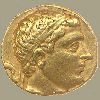Never Be Without a Place To Detect Again
Old Photographs and Lithographs
� �Old photographs, lithographs and postcards can be worth a thousand footsteps as well as a thousand words. They will give you a first-hand visual description of the place of your interest, let you see many of the changes that occurred in the area over the years, and often enable you to pinpoint an exact location of the spot among the modern infrastructure.
� �Tools for research can take on other forms and types. More likely you will develop your own research methods and techniques. Always think like a detective, develop a concentrated self-discipline, be persistent, diligent and dedicated, be curious and have fun! Today it is the internet, Google Earth, GPS, and all sorts of historical information sites.
� �Make a list of the ten closest sites you would like to detect if all the requirements fell into place. Learn all you can about them, then go about getting permission from the property owner of each to search, and move down the list when the search is either blocked or completed. Talking to people will be one of your best lead sources. Be a good listener also.
� �By the time you reach the bottom, you will have at least ten more sites to research, and a place to go anytime you have the urge to go out, for the rest of your life. Talk to Ther's who are retired or unable to get out anymore, they are likely an excellent source for places they would love to go to if they were able to. If you can't find a place after all the above, you should perhaps find another hobby.
Logging
� �Does your area have any history of logging? If so, there may well be clubs or groups that identify and map the old logging camps, roads, and ways to get to them. Axes, chains, canthooks, ox shoes, marsh shoes, hand-forged iron, etc, are common items found in these areas, and can be highly sought after artifacts by museums and collectors.
� �While cruising Ebay one day, I ran across several old postcards from my area, one of which showed the old swimming hole on a local river of a small town nearby. I didn't even need to buy the card, cheapskate that I am, I simply copied the jpg and archived it on my computer. After printing it out, I visited some old friends that I knew in the town, and they were able to pinpoint the location exactly for me. This place is on the top of my list for the first outing this spring. Effort, thought, and a little work will always pay off.
� �Here is another experience I have had that would also be helpful to many. So you live in a big city, and don't get out into the highways and byways of the rural areas where the 'ghost' towns and lost and abandoned sites are. Well then, you are more fortunate than most, and there is no reason in the world why shouldn't have more old silver coins than 95% of detectorists in the world.
� �You are standing on a silver mine, literally tons of silver US coins which you walk and drive past every day of the year. That is not an exaggeration either. A thousand, nay, ten thousand hands full of silver await anyone willing to dig them up.
� �When I lived in the big city of Milwaukee, Wisconsin, and first began detecting, I found that the absolute best place to go were the older residential neighborhoods. Older houses, built around the turn of the century or shortly thereafter. Front yard, back yard, either side of the house, it didn't matter. I always walked away with one or more heaping hands full of silver US coins, jewelry (usually dime store junk), fraternity pins, and all the other lost junk of people.
� �I am fairly sure I didn't get to detect every yard in the city, so there are probably a few hundred thousand left to detect. And, nice guy that I am, I left all the other big cities for other detectorists. The more I found, the more offers I received from neighbors who wanted to know what was in their yards also. Frankly, I just got tired of digging up coins because silver wasn't worth that much back then, and there was a lot of it still in circulation.
� �One neighbor refused to let me detect his lawn, went out and bought his own detector, and his first time out found a cache of 30 US gold coins under a cement bench in his backyard. He said he had no idea who they originally belonged to, but he always 'knew' there was gold buried in the yard. I invited him to go with me several times, but he always refused.
� �Since 1787, when the Northwest Ordinance was adopted to govern the Wisconsin Territory, the State's navigable waterways have been considered public - for the use of all citizens. Article IX of Wisconsin's Constitution provides that navigable waters are held in trust, and "forever free."
Navigability
� �Navigability determines whether a body water is public or private in Wisconsin. Navigable streams, lakes, and rivers, are public waters. Navigable is generally defined a body of water that will float a canoe. Because navigable waters are public, they may be used for fishing and recreation, provided public access is available, or you have permission of a landowner to cross their property to reach the water.
� �Effective September 1, 2001, people using these waterways will, for the most part, have to return to the old "keep your feet wet" test, as created by the Wisconsin Supreme Court.
The "Old Law', Not Currently In Effect
� �"Members of the public may use any exposed shore area of a stream without the permission of the riparian (i.e., landowner) only if it is necessary to exit the body of water to bypass an obstruction. In addition, a member of the public may not enter the exposed shore area except: from the water, from a point of public access on the stream, or with the permission of the riparian (i.e., landowner).
� �Obstructions could consist of trees or rocks, shallow water for boaters or deep water for wading trout anglers. The bypass can involve areas up to the ordinary high water mark and should be by the shortest possible route. "
� �Use of navigable waterways in Wisconsin does not begin and end with fishing and boating regulations. Use is defined as " water related recreational activities ", and no specific regulation prohibits metal detecting in Wisconsin waters.
� Here I will expand on one of my ideas referred to earlier. See Tips and Tricks in the Metal Detecting forum. For someone who cannot find a place to detect, this idea will provide more places to detect than could possibly be searched in a lifetime. No one should ever be at a loss for a place to hunt with this information, ever.
� �It should also work in most every other state and many countries. The big rule of thumb here is to know the laws regarding navigable waters for your state or country, as relating to where you want to detect. I have read many books by the pro's on where to detect, and have never seen anyone mention the concept put forth here.
� �It will require some equipment different from land hunting, but the rewards will pay off in the returns. Most of these beaches/shores are 'virgin', never been hunted, and the finds will be as good or better than most land sites. Old lures can be quite valuable, if found in good condition, and coins, jewelry, and probably anything else you can think of will be found.
� Watch out for rusty fish hooks!.While Minnesota is known as 'The land of 10,000 Lakes', Wisconsin has 14,927 lakes, more than 1500 trout streams consisting of about 8800 miles, and many have public and/or private beaches, and all have shoreline. I would love to hear some experiences of those who take this concept and run with it though.
� �Some of the best places to detect will be the old beaches, abandoned or no longer in use. How do you go about locating them? Here is one easy way, and no doubt there are many other ways.
� �As an example, I started my search today on Ebay, using "Wisconsin beach postcards" as my search query. It returned five entries which I listed below, with my comments on each. Good luck and good hunting. Different cards are listed every week, sometimes every day, and you don't need to buy them. I copy and save the jpg's, or print them out. It is great for finding where the old beaches were.
1. WI. SHAWANO WISCONSIN 2 1940's Postcards BEACH BLDG LAKE
� �It should be easy to find this location using the geographical features of the photo, and a map. And I love the supersize option provided in the advert. To me, the building shown in the photo indicates this is a park, and probably still is. If I were to consider hunting this place, I would copy and save the photos and ad description, and then do my research.
� �Resorts and parks have been in continuous operation since the early days, asking a resort owner should provide detailed answers to locate sites from the photos. And there always seems to be an angler or two sitting at the bar in the resort who were eager to help out also.
� �Maps and other detailed information are available and usually free at tourist information centers, or the local Chamber of Commerce. Truck stops/car plaza's always seem to have a rack in the lobby with free local information for tourists. And don't forget the local library.
2. South Beach, Racine Wisconsin, Postcard Sent 1909
� �Another scene with landmarks that should be fairly easy to identify today. It is obvious to me that this is a scene along the shore of Lake Michigan, and if it is no longer used as a beach, it would be well worth locating it. Lake Michigan's water is mighty cold, even in the summer. Two miles inland from shore it can be 87F, but standing on the beach in shorts can be intolerably cold.
3. North Beach-Shawano Lake-Shawano Wisconsin Postcard
� �A view of homes along the north shore of Lake Shawano, easy to locate. If curious home owners ask what you are doing walking in the water, kiindly explain to them what you are doing. This may be an opportunity for you to offer to find a sentimental or valuable item they may have lost on their property. A pleasant conversation can often result in a new treasure lead, more exact information of the water and beaches on it, etc.
4. SCHWAGER BEACH GOLDEN LAKE WISCONSIN SULLIVAN POSTCARD
A 1911 litho/ photo of an identified beach, easily located.
5. J-12 Birch Beach Old Jumbo Postcard- Phillips, Wisconsin
A shoreline view of a named lake, no problem finding this one, any map should show it.
� �It pays to know the laws regarding public waters in your state. In Wisconsin, you can travel in or on any public waterway without having to get permission of any landowner. As the term states, they are land owners, which means they are not water owners. Just stay in the water, and be prepared with the proper equipment. Use what works best for you. I have seen people use a canoe, others have used an innertube with milk crates attached to it for holding their equipment out of the water.
� �In this manner, you should be able to search any lake, river or navigable stream in the state without having to ask anyone's permission, as long as there is public access to it. Your search are must be shallow enough for you to stand, detect, and scoop your targets.
� �Use caution if you plan to use hip or waist waders. If you slip or fall and they fill up with water, you could drown from the weight of the water, causing you to sink.
� �Most lakes and rivers have public access for launching watercraft or entering the water if you aren't using a boat. Navigable means any body of water than can float a craft. Today, there are many different types of personal watercraft. A small one or two man rubber raft need not be licensed as is required for a fishing boat or canoe. The options of how you want to be in the water are numerous and varied. Find what works for you. And let us know here what you find. Good hunting!
Bart

 , .
, .








